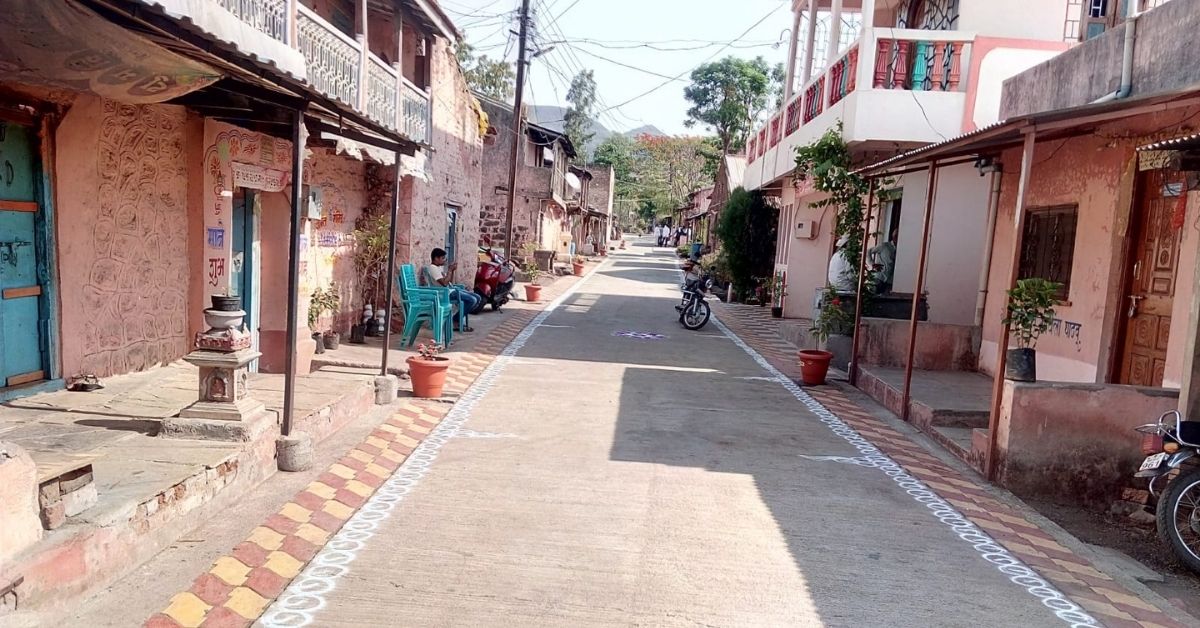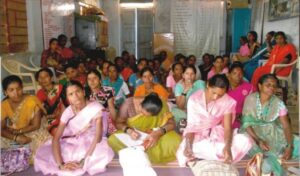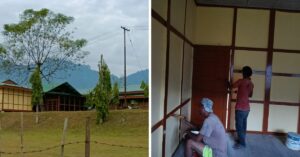How Women Turned A Tiny Village Struggling With Darkness Into A Solar Gram
Thirteen years ago, women in Manyachiwadi village of Maharashtra's Satara district took the leap towards a more sustainable way of life. It was their money that sponsored the village's transformation into a model 'Solar Gram'.

Every 10 days, a male and a female representative from each home at Manyachiwadi village, located in Satara district of Maharashtra, assemble at 9 pm for their gram sabha meeting. They are judicious and proactive, and play as big a role in the village’s progress as the five constituent members of its gram panchayat.
In sync with the findings of the latest National Family and Health Survey, 231 women form the majority of Manyachiwadi’s 420 residents. But that isn’t what makes the hamlet stand out from other rural areas in the state. Rather, the community has drastically reduced its reliance on power supplied by the Maharashtra State Electricity Distribution Ltd (MSEDCL), which is presently facing arrears of over Rs 70,000 crore.
While several villages in the state continue to protest against erratic power cuts and make their peace with prolonged darkness, all 128 homes in Manyachiwadi boast of two 20 watt (W) solar energy light bulbs each. A central 3 kilowatt (KW) solar system also powers 12 street lights, the village’s gram panchayat building, an anganwadi, a primary school and even the main dairy outlet.
Thirteen years ago, as many as 12 women-run Self-Help Groups (SHGs) not only took the initiative to ensure Manyachiwadi’s leap to a more sustainable way of life, but also bore the majority of the expenses for setting up the solar energy systems.
“Since its establishment in 2001, our gram panchayat has received 59 state and national awards for developmental projects, and the women of Manyachiwadi deserve the credit for the successful execution of most of these,” sarpanch Ravindra Anandrao Mane (42) tells The Better India.
“About half of our electricity comes from solar energy, but we are working towards making a 100 per cent shift,” he adds. “For the past two years, panchayat officials have been studying the village’s 103 MSEDCL meters, to assess how consumption differs on a monthly basis. For instance, fans are used a lot more in May than other summer months, while none are used in January. Once the research process is complete, we can invest in more solar energy systems accordingly.”

Ignited by women
During the early 2000s, Manyachiwadi used to receive most of its electricity from the Koyna River dam, one of the four dams under India’s second largest hydroelectric power plant, says Ravindra. “Unfortunately, we used to face eight hours of load shedding everyday. Still, we somehow managed to go about our routine during the day, but the load shedding also happened at nighttime, making it an extremely unreliable source,” he adds.
At the same time, the gram panchayat had begun to set up SHGs under the Maharashtra government’s Umed scheme. Each SHG comprised 10-15 women, and helped them begin their journeys of self-reliance. Daily interactions enabled these women to build a safe space where they eventually began discussing other subjects concerning their daily routine — menstrual hygiene and family planning, tips on farming practices, and the dearth of regular power supply.
“Most people here depend on agriculture for their livelihood and work on their farms till late evening. Back then, we barely had any street lights and the ones we did didn’t always work; it was a task to make our way back home on patchy roads,” recalls Sangita Pachpute (45), who wakes up at the crack of dawn to tend to her groundnut and paddy crops.
“At home, too, we struggled to cook and manage other household chores, while our children couldn’t complete their schoolwork. Once the women realised it was a major problem for all of us, we got together and brought it up with the sarpanch,” she adds.
Deliberations ensued and a couple of gram sabha meetings later, it was clear that all villagers were on board. “After deciding to undertake the solar energy project, we publicised it with the help of print media. Soon, representatives from solar companies across the state started approaching us. But they’d quote prices as high as Rs 10,000, which wasn’t a cost-effective solution,” says Ravindra.
“Eventually, we decided to go ahead with a company from Pune that agreed to offer a subsidised rate of Rs 5,700 for each solar system, with a guarantee of five years. This involved a solar panel, a battery and two 20 W light bulbs for each home,” he added.
“We had started setting aside Rs 100 per month in 2001. By 2008, every woman was able to save Rs 9,600 and contributed Rs 4,500 towards buying the solar system for their own houses,” says Sangita. “The solar company also trained some youths to explain to the other villagers how they could take proper care of their solar batteries.”
The remainder of the sum was sponsored by the gram panchayat using leftover money sanctioned by the government for the village’s infrastructural development, says Ravindra.

An inspiring model for the region
According to Ravindra, the village has been able to reduce its electricity expenses by 70 per cent. “Before each home had its own solar energy system, the entire village was paying as much as Rs 65,000 every month to the MSEDCL. Presently, the expenses are between Rs 18,000 and Rs 20,000. Residents make use of the board electricity for their refrigerators, TVs and other heavy duty equipment. But we are working hard to change that,” he says.
Sarjerao Mane (72), another resident who spent a majority of his youth without electricity, says the consistency of solar energy has been nothing short of a blessing for his family of eight.
“With such frequent power outages earlier, we used to heavily rely on kerosene lamps. But now, even if load shedding happens, our solar bulbs save us the hassle. People from nearby villages come to see our systems; they say they’ve never seen anything like it before and are inspired to implement it for their homes, too. It makes me really happy,” he shares.
Besides students and researchers who visit Manyachiwadi on educational trips, the village has also piqued the interest of local filmmakers, having been the prime shooting location of popular Marathi film Zhalla Bobhata (2017).
The Manyachiwadi Gram Panchayat has also built other environmentally-friendly units such as a biogas plant and a completely underground drainage system, whose wastewater is treated and reused to water as many as 500 trees in the village. A solar-powered borewell was also set up in 2019 under the state government’s Mukhyamantri Saur Krushi Pump Yojana.
Among the various state and national awards Ravindra has received on behalf of Manyachiwadi, the most notable one, he says, is the Adarsh Gram Award, given to him by President Ram Nath Kovind in 2018.
“Despite the accolades, the government is yet to take note of the fact that each home in our village makes use of solar energy. We’re the first village in Maharashtra to do so, which is a massive achievement for an area as rural and remote as ours,” he says. “The government should take the initiative to replicate our model in other villages and even urban areas.”
For any enquiries, you can contact Manyachiwadi Gram Panchayat here.
This story made me
- 97
- 121
- 89
- 167
Tell Us More
We bring stories straight from the heart of India, to inspire millions and create a wave of impact. Our positive movement is growing bigger everyday, and we would love for you to join it.
Please contribute whatever you can, every little penny helps our team in bringing you more stories that support dreams and spread hope.



















